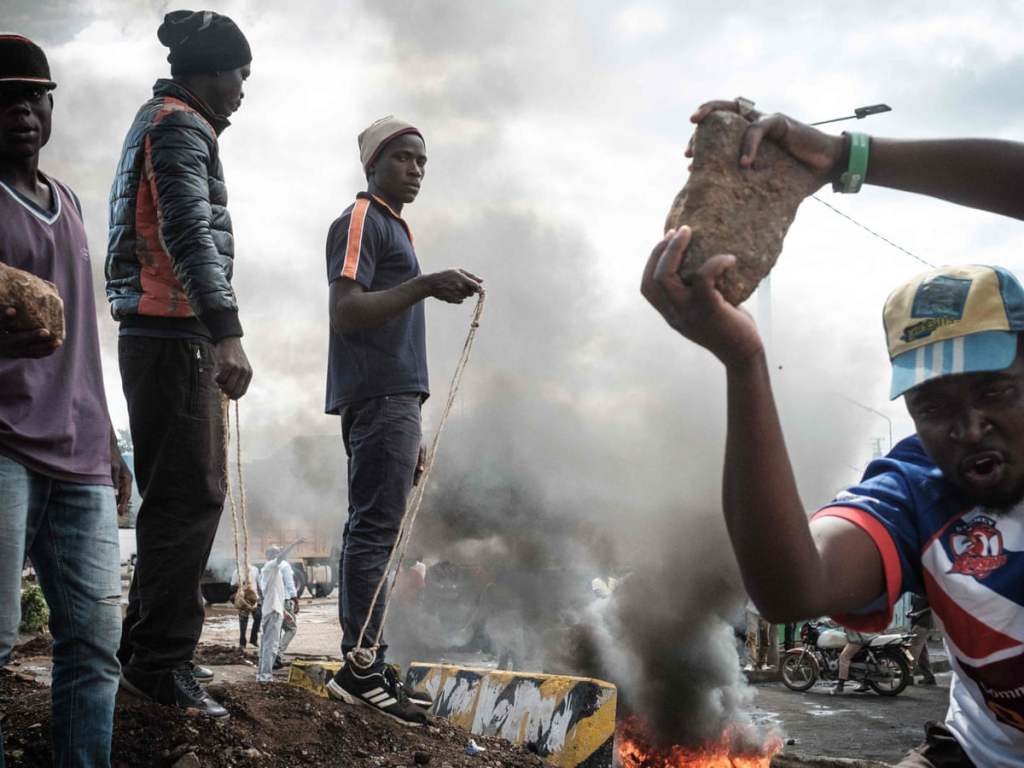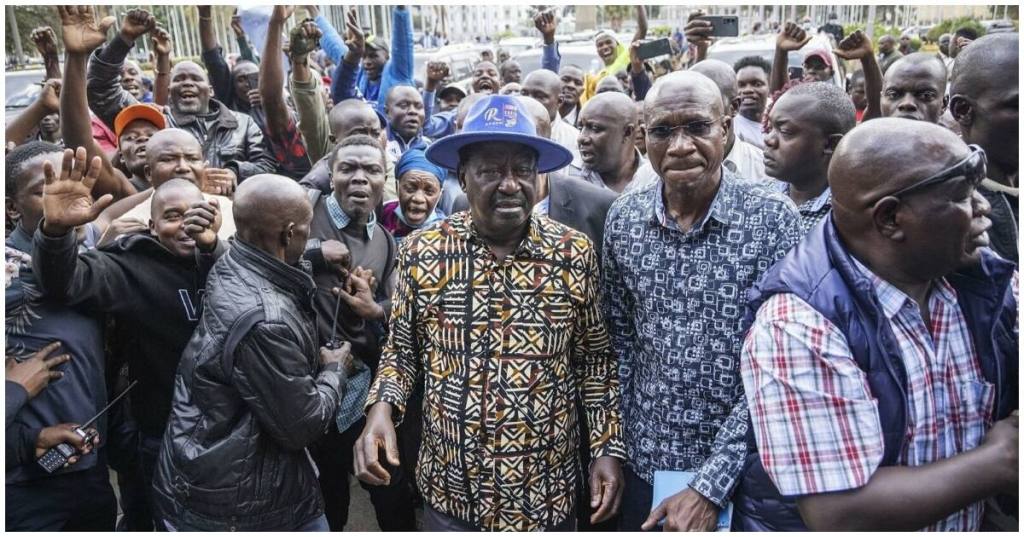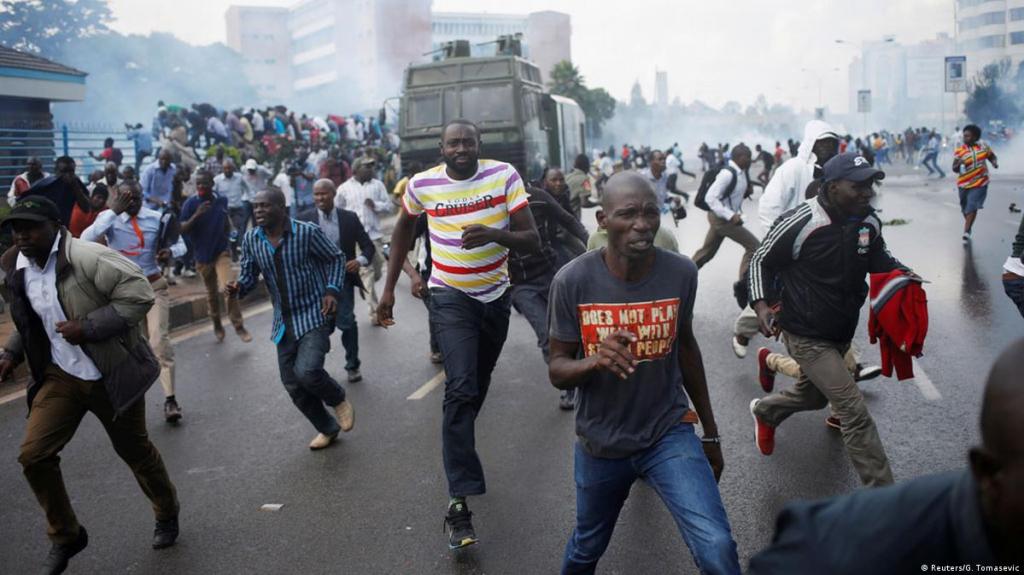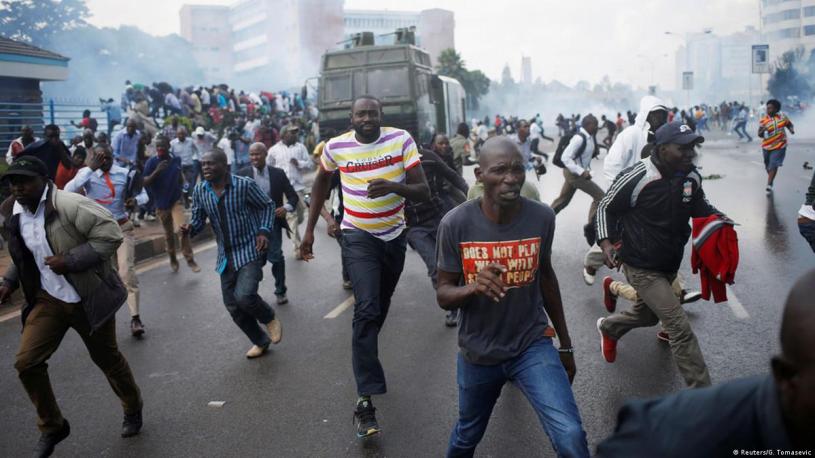Hello Millenial Readers,
For ages, demonstrations have been used to effect societal change. From the French Revolution to the Civil Rights Movement in the United States, protests and demonstrations have been instrumental in bringing about change. Kenya’s opposition leader, former Prime Minister Raila Odinga, recently announced Mondays and Thursdays as protest days against rising living costs and other problems related to the 2022 elections.

As we saw on Monday, several regions of the country, including Nairobi, were brought to a halt. The question remains, however: do demonstrations work? And will they ever be at peace? In this read, we will examine these issues using Kenya as a case study and the history of protests in the country up until 2022, highlighting the responsibilities of millennials and generation Z in changing the status quo.
Kenya has a lengthy history of protests. Demonstrations were prevalent during the battle for independence from British colonial control in the 1950s and 1960s. Demonstrations were an important aspect of the pro-democracy movement that successfully pressed the government to allow multiparty elections in the 1990s. Protests have become a frequent aspect of Kenyan politics since then, with numerous factions taking to the streets to demand reform.
In 2017, one of the most significant demonstrations in recent Kenyan history took place. Tensions were high as the country prepared for a presidential election. Raila Odinga’s opposition party accused the ruling party of manipulating the election and sought a new vote. When their demands were not satisfied, they called for nationwide protests.
Protesters and police officers clashed in the streets, and the demonstrations swiftly turned violent. Several people were murdered, and hundreds more were injured. In response, the government banned all protests throughout the country, citing the necessity to maintain law and order.
Demonstrations continued despite the violence and the prohibition. The opposing party refused to accept the results of the election and requested a new vote. A compromise was eventually struck, and a fresh election was held in October 2017. Raila Odinga withdrew from the campaign, citing worries about the impartiality of the election. Uhuru Kenyatta, the incumbent president, was proclaimed the winner.
So, Did the Protests Work?
It all depends on your perspective. On the one hand, the demonstrations were successful in forcing a new election. The election outcome, on the other hand, was substantially the same, with the incumbent president being re-elected. The opposing party’s ultimate goal of gaining power was not realized.

However, the demonstrations did have an impact beyond the election itself. They brought attention to issues of electoral integrity and democracy in Kenya. They also demonstrated the power of the people to demand change and hold their leaders accountable. In this sense, the demonstrations were a success.
The history of demonstrations in Kenya up to 2022 shows that protests can effectively bring about change. However, they can also be risky and unpredictable. The 2017 demonstrations were marked by violence and chaos, and the outcome was not entirely what the protesters had hoped for. Nonetheless, the protests impacted and brought attention to important issues.
Can Demonstrations Be Peaceful?
We have witnessed that demonstrations can be a powerful tool for effecting change, but they often turn violent and destructive, causing harm to people and property. It is time to rethink how we do demonstrations and focus on peaceful, non-violent means of protest.
Peaceful demonstrations are important because they allow people to express their views and demand change without violence. When protests turn violent, innocent people can be hurt or killed, and property can be destroyed. This can undermine the credibility of the protest and turn public opinion against the cause. By contrast, peaceful protests are more likely to attract sympathy and support and create a sense of unity and solidarity among those participating.
There are many examples of countries where peaceful protests have brought about change. One of the most famous is the Civil Rights Movement in the United States. Led by figures such as Martin Luther King Jr. and Rosa Parks, the movement used non-violent protests such as sit-ins, marches, and boycotts to demand an end to segregation and discrimination against African Americans. These peaceful protests helped to bring about significant changes in the law and paved the way for greater civil rights and equality.

However, in Kenya, it is often argued that the police are the ones who initiate violence during protests. Furthermore, we have even heard of cases where politicians paid goons to destroy properties and cause harm to people so that blame could be placed on those involved in the demonstrations. For example, during the 2017 protests, incumbent politician and former governor of Nairobi County Mike Sonko admitted to using the above tactics. Given such, it is easy to doubt if it is possible to have peaceful demonstrations in our country.
What Role Can Current Generations Play in Changing the Status Quo?
We, the millennials and Generation Z, are responsible for finding ways to eliminate violent demonstrations.
One of the key factors that can contribute to our success in promoting peaceful protests is their ability to leverage technology. Millennials and Generation Z are the first digital natives, and they have grown up with technology as an integral part of their lives. They use social media platforms such as Twitter, Facebook, and Instagram to organize and mobilize people for protests. We can reach many people quickly and easily through these platforms and coordinate our activities without physical meetings. This role in Kenya is often left for the KOT (Kenyans on Twitter), often called keyboard warriors.

Another important factor is our commitment to non-violent methods of protest. Millennials and Generation Z are more likely to embrace peaceful methods of protest, such as sit-ins, marches, and petitions, rather than violent demonstrations. We should have learned from past experiences and understand that violence can only breed more violence and lead to negative consequences.
Furthermore, as we take leadership roles, we need to establish policies that protect citizens from harm from the police. We have witnessed protestors being beaten with clubs or whips, and police use other violent means, such as teargas and high-pressure water canisters, to disperse them. The role of the police should be to protect them and ensure that the protesters are peaceful and that no harm comes to people and property.
In conclusion, demonstrations can work, but their success depends on various factors. The Kenyan example shows that protests can effectively bring attention to important issues and force change, but they can also be risky and unpredictable. Ultimately, whether or not demonstrations work depends on the specific circumstances of each situation, but in our nation, we, the future generations, need to find a way to ensure peaceful demonstrations. Even though it is our right to engage in such, we need to find a suitable way to engage in it that causes less harm to others.
Until Next Time
Fabian 🥳

